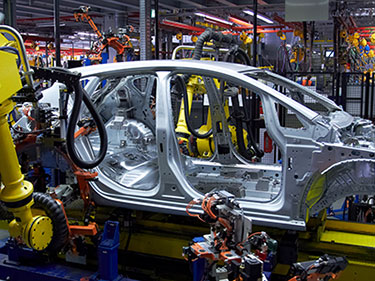 Machine vision is closely intertwined with much of today’s automotive innovation. It not only supports consumers' experience of next-gen vehicles, but facilitates advances in manufacturing automation that control costs and enhance production.
Machine vision is closely intertwined with much of today’s automotive innovation. It not only supports consumers' experience of next-gen vehicles, but facilitates advances in manufacturing automation that control costs and enhance production.
Machine vision camera technologies continue to advance high-speed inspection of virtually all parts, affording automotive manufacturers faster production rates at lower costs without compromising quality.
Until recently, automotive plants have mainly relied on 2D machine vision technologies that execute inspections based on simple parameters. Now, manufacturers implement 3D vision capabilities that enhance precision using multiple cameras.
Many of these employ cutting-edge vision and control systems integrated throughout the factory floor. They can be monitored and optimized by supervisors from control areas that may be far removed from the equipment, improving safety.
Robot-Assisted Production Reaches New Frontiers
With the advent of cost-effective 3D imaging, it is possible to imagine robotic devices operating with greater autonomy on the factory floor. By combining sophisticated sensors with machine vision devices, robots can leave their cages and work safely beside humans.
Leveraging the visual data collected by cobots - robots that work collaboratively with humans - makes process improvement far easier.
Instead of being limited to inspection data from fixed perspectives along the production route, decision-makers can closely observe equipment and operator interactions. This reveals opportunities to optimize floor layout and streamline processes that were hard to spot before.
Servos, actuators, and other robotic components are evolving alongside machine vision. With finer movement, the operational utility of robots’ vision data can be expanded. They can combine several inspection and manipulation tasks while relying on the same vision equipment.
Machine vision continues to facilitate advances in automotive production, keeping manufacturers competitive in a highly competitive and demanding marketplace globally. Machine vision cameras, controllers, and platforms – robotic or not – need to develop together to unlock their full potential. Luckily, auto producers worldwide have embraced the promise of utilizing machine vision to the utmost.
